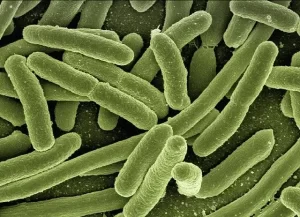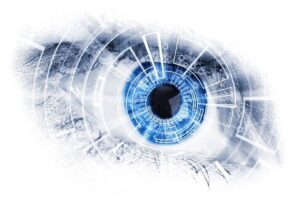Nature: Everything about CAR-T cells
- Did Cloud Seeding Unleash a Deluge in Dubai?
- Scientists Identify Gut Bacteria and Metabolites that Lower Diabetes Risk
- OpenAI’s Model Matches Doctors in Assessing Eye Conditions
- UK: A Smoke-Free Generation by Banning Sales to Those Born After 2009
- Deadly Mutation: A New Monkeypox Variant Emerges in the DRC
- EPA Announces First-Ever Regulation for “Forever Chemicals” in Drinking Water
Nature: Everything about CAR-T cells
Nature: Everything about CAR-T cells. Changing the way of tumor treatment in the future, cell therapy can be expected in the future. Recently, an article published by Nature Reviews Cancer introduced the effectiveness and safety of CAR-T cell therapy in the past three years.
CAR-T therapy, also known as chimeric antigen receptor T cell therapy, is to inject human T cells into the patient’s body after genetic engineering means in vitro modification for the treatment of diseases. CAR-T technology has gradually developed, and clinical results have shown that CAR-T cells have great advantages in the treatment of hematological malignancies. However, with the deepening of research and the continuous increase of applications, the adverse effects of CAR-T treatment have gradually been recognized and paid attention to.
Recently, Nature Reviews Cancer published an article entitled Recent advances and discoveries in the mechanisms and functions of CAR T cells, which mainly introduced the effectiveness and safety of CAR-T treatment in the past three years.

CAR-T cell therapy
1 CAR-T cell therapy
CAR-T cell is a single-chain variable region (scFv) of antibody chimerized with T cell surface receptor on T cell, which is mainly composed of three parts: extracellular region, transmembrane region and intracellular region. The extracellular region is usually a single-chain antibody (scFv), which is responsible for recognizing and binding to the target antigen; the transmembrane region is the hinge or spacer, which anchors the scFv to the cell membrane; the intracellular signal domain is composed of costimulatory factors and CD3 signal domains . When the antigen is recognized and combined, a stimulus signal is generated and transmitted to the intracellular signal domain, and T cells are activated and exert effector functions.

Structure of CAR-T
The first generation of CARs consisted of an extracellular antigen recognition region, a single-chain variable fragment (scFv), fused with a transmembrane region and an intracellular signal domain of the T cell receptor (TCR) CD3ζ molecule [1-4]. However, due to the slow expansion and poor durability of the first generation of CAR-T cells, they have little effect in clinical trials [5].
The second-generation CARs contain a costimulatory domain, which is derived from the CD28 or 4-1BB domain, located between the transmembrane region and the CD3 signaling domain. The results of the study show that targeting CD19 second-generation CAR-T cells have significant effects in clinical treatment. In 2017, the US FDA approved the first CAR-T product targeting CD19 to be launched on the market [6]. The third-generation CARs added a costimulatory domain to the second-generation CAR to enhance T cell signal transduction. The subsequent development of multiple generations of CAR molecules will not be repeated here.
At present, the FDA has approved a total of 4 CAR-T drugs for marketing. CAR-T treatment has opened a new door for tumor treatment.

The first to third generation CAR-T
2 Toxic side effects of CAR-T cell therapy
As the saying goes, “It is a three-point drug”, during CAR-T treatment, side effects will also occur. Common clinically are cytokine storm (CRS) and neurotoxicity (Neurotoxicity). CRS patients usually present with fever, hypotension and respiratory insufficiency in the first week of CAR-T cell therapy, accompanied by high cytokine levels; neurotoxicity manifests as temporary working memory loss, confusion, seizures, etc. .

Side effects of CAR-T treatment
Solutions
- Intervene in cytokines, antibodies block IL-1, IL-6 and GM-CSF, and block excessive inflammation.
- To control the excessive activation of T cells, use tyrosine kinase inhibitors to block activation signal transduction.
- Chemical drugs block the excessive release of cytokines, and methine is used to block catecholamine-like effects.
3 Resistance to CAR-T cell therapy
In addition to toxic reactions, resistance problems can also arise during CAR-T treatment, which can be divided into two aspects, antigen-dependent and non-antigen-dependent, according to the different mechanisms.
Antigen dependent
Cause:
- Loss of target antigen (refers to the CAR molecule being able to remove the target antigen from tumor cells and internalize it to reduce the antigen density on tumor cells).
- The gene mutation of the target antigen causes the target not to be effectively recognized.
- The target epitope is masked.
Solutions:
- (1) Design multi-targeted CAR molecules;
- (2) Increase the expression of target antigens;
- (3) Improve the affinity of scFv and target antigens, which may help CAR-T cells recognize low-density target antigens.
Antigen-independent
Cause:
- The lack of death receptors on the surface of T cells leads to excessive depletion of T cells.
- The absence of ligand molecules on the surface of tumor cells, such as FAS-related death protein (FADD), tumor necrosis factor-related apoptosis-inducing ligand-2 (TRAIL-2), makes tumor
- Cells more resistant to CAR-T cells in vitro and in vivo effect.
Solution:
- Block immunosuppressive checkpoints, prevent T cell exhaustion, modify PD-1 molecules on CAR-T cells, express PD-1 dominant negative receptors on the cell surface, or use CRISPR-Cas9 gene editing technology to knock out T The PD-1 gene on the cell.
- Improve the proliferation, durability and anti-tumor activity of CAR-T cells, and express IL-7 receptors on CAR-T cells.
- Changes the differentiation of the terminal state of T cells. Studies have shown that overexpression of c-Jun AP1 transcription factor can reduce T cell exhaustion [7].
Tumor Microenvironment (TME)
The tumor immunosuppressive microenvironment includes immunosuppressive cells (such as Treg cells, myeloid suppressor cells) and inhibitory molecules (such as TGF-β, IL-6, IL-10, and PGE-2) that can inhibit CAR-T cells.
Solution:
(1) Enhance the infiltration capacity of CAR-T cells, and overexpress IL-7 and CCL-19.
(2) Change T reg-mediated immunosuppressive effect.

Antigen-dependent and antigen-independent resistance mechanisms
4 Research progress of CAR-T cell therapy
New target and new data CAR-T
- Multiple myeloma: new targets GPRC5D (G protein coupled receptor), CD38, CD138, SLAMF7
- Pan cancer: immune checkpoint molecule B7-H3 (CD276), Tn-PDPN, etc.
- Brain Tumors: Chlorotoxin Peptides

New therapeutic targets and therapeutic products
In addition, CAR-T cells modified by certain specific T cell subsets may produce better results.
CD26highCAR-T cells can produce IL-17A, IFN-γ, IL-2 and IL-22, express CCR2 and CCR5 on the cell surface, and have memory stem cell-like characteristics.
CAR-T cells derived from γδ T cells, γδ T cells can tolerate T cell exhaustion, their surface inhibitory receptors (TIM3 and PD-1) expression levels are low, and can cross-present tumor antigens.

Selection of cell subsets
Universal cell therapy
Universal cell therapy is the direction of future development, and its main difficulty is the GvHD host versus graft response. The host versus graft response is related to the HLA gene on the TCR.
For general CAR cell therapy, one idea is to edit and modify related genes, such as the TCR-α gene of TALEN gene editing or CRISPR-Cas9 gene editing to knock out the HLA gene on TCR; another idea is to design CAR molecules, the zipper-CAR system The intracellular structure of scFv and CAR molecules is bridged by the receptor and ligand of the zipper protein, and a universal CAR targeting multiple antigens is designed by changing different scFvs.

Universal CAR-T system
CAR-X cell therapy
CAR-NK: NK cells are natural killer cells with natural anti-tumor effects. Its advantages are that it has no MHC restriction, high safety, and can prepare allogeneic cells. CAR-NK is a better choice for general cell therapy.
CAR-M (macrophages): Macrophages have antigen-specific phagocytosis and pro-inflammatory polarization, which can cross-present antigens and activate T cells. Studies have shown that CAR-M macrophages exhibit strong anti-tumor activity in mouse lung cancer metastasis models.
CAR-Treg: Treg cells can secrete immunosuppressive molecules TGFβ, IL-10, IL-35, which can be used to treat autoimmune diseases and rejection of organ transplantation, and can also prevent excessive activation of T cells.

New CAR cell design
5 At the end of the article
CAR-T cell therapy has been developed for more than 30 years, and clinically good therapeutic effects have also been achieved. However, risks and opportunities coexist, and CAR-T cell therapy has also shown potential toxicity and drug resistance issues, which has accelerated the pace of finding new tumor targets, studying signal mechanisms, and developing new technologies.
Innovations in CAR molecular design, transduction methods, and selection of the best cell types may bring new breakthroughs and change the treatment of tumors in the future, and cell therapy can be expected in the future.

references:
1.Stancovski, I. et al. Targeting of T lymphocytes to Neu/HER2-expressing cells using chimeric single-chain Fv receptors. J. Immunol. 151, 6577–6582 (1993).
2. Eshhar, Z. et al. The T-body approach: potential for cancer immunotherapy. Springer Semin. Immunopathol. 18, 199–209 (1996).
3.Hwu, P. et al. Lysis of ovarian cancer cells by human lymphocytes redirected with a chimeric gene composed of an antibody variable region and the Fc receptor γ chain. J. Exp. Med. 178, 361–366 (1993).
4. Hwu, P. et al. In vivo antitumor activity of T cells redirected with chimeric antibody/T-cell receptor genes. Cancer Res. 55, 3369–3373 (1995).
5. Kershaw, M. H. et al. A phase I study on adoptive immunotherapy using gene-modified T cells for ovarian cancer. Clin. Cancer Res. 12, 6106-6115 (2006).
6. Mullard, A. FDA approves first CAR T therapy. Nat. Rev. Drug Discov. 16, 669–669 (2017).
7. Lynn, R. C. et al. c-Jun overexpression in CAR T cells induces exhaustion resistance. Nature 576, 293–300 (2019).
(source:internet, reference only)
Disclaimer of medicaltrend.org



